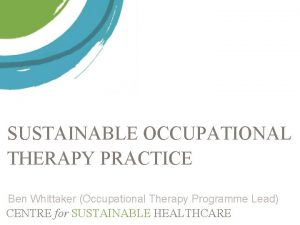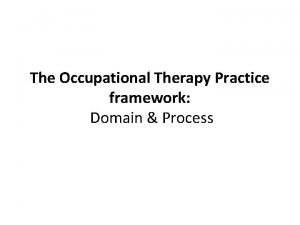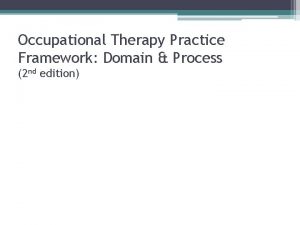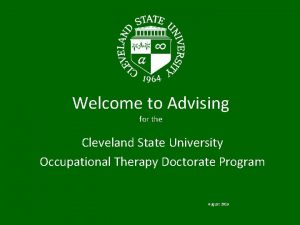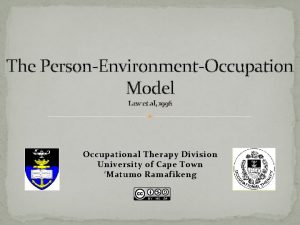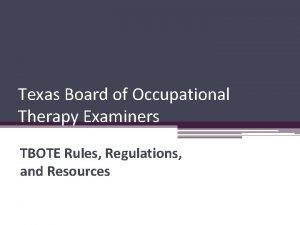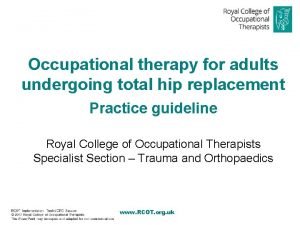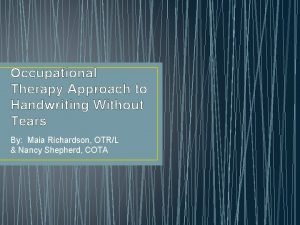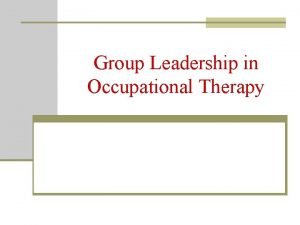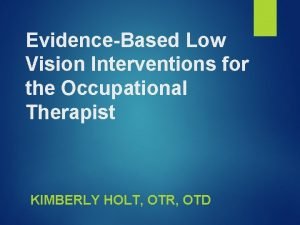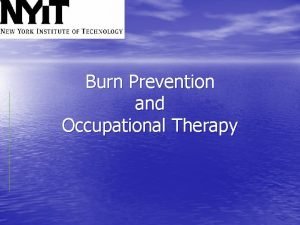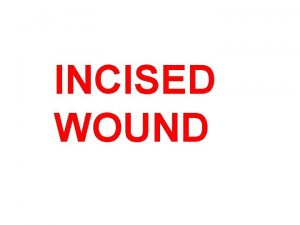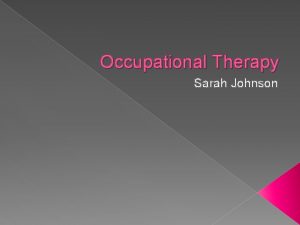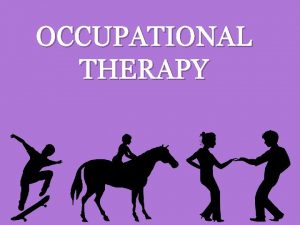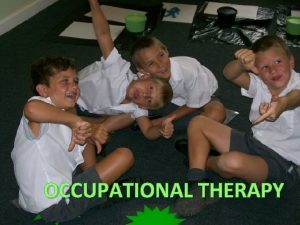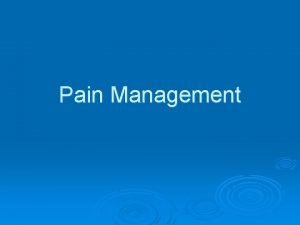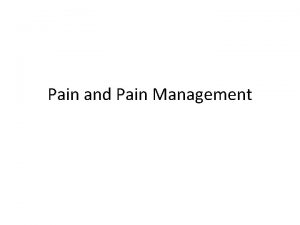Wound Pain management PHYSICAL AND OCCUPATIONAL THERAPY Physical














- Slides: 14

Wound Pain management











PHYSICAL AND OCCUPATIONAL THERAPY • Physical and occupational therapy services may be a valuable asset to utilize in conjunction with pharmacologic therapy. • Passive and active range-of-motion exercises should be taught to the patient and his or her caregivers. • Additional measures include the following: • • Patients with peripheral vascular disease may benefit from a walking program to facilitate development of collateral circulation in the lower extremities. • • Application of a transcutaneous electrical nerve stimulation unit may help to decrease pain, particularly in patients with chronic or acute wounds. It’s believed that the electrical stimulation provided by the unit helps to inhibit pain transmission cells. • • Hot or cold packs can be applied to decrease spasms in the affected area. • • Stretching exercises help to decrease contractures. • • Exercise helps to decrease muscle spasms with massage.

Alternative pain management methods • Many natural pain control methods and therapies may be implemented to ease pain, stress, and anxiety. These methods can improve one’s outlook, attitude, and quality of life. • Alternative therapies, when used in conjunction with pain medications, may enhance the beneficial effects of pain medication. • Laughter helps you breathe • deeper, lowers your blood pressure, and changes your mood. • Acupuncture. The application of needles • to specifi c areas of the body may decrease or eliminate pain and has been used for more than 2, 500 years.

Alternative pain management methods • Environment. • Having the room at a comfortable temperature, avoiding bright lights, and keeping the room quiet may help to decrease pain. • Distraction. • Playing cards, watching television, visiting with friends, petting an animal, and writing about his or her feelings can help the pain • Magnets may effect changes in cells or body chemistry that can produce pain relief. The use of magnets, which dates back to ancient Egypt and Greece, is popular with athletes, who report their effectiveness in controlling pain. • Capsaicin, a chemical found in chili peppers, is the primary ingredient in many painrelieving creams for the treatment of neuropathic pain. The local burning sensation it produces replaces the pain sensation.
 Bioness integrated therapy system occupational therapy
Bioness integrated therapy system occupational therapy Occupational therapy and environmental sustainability
Occupational therapy and environmental sustainability Occupational areas
Occupational areas Occupational therapy practice framework domain and process
Occupational therapy practice framework domain and process Pain x mad
Pain x mad Breast pain pregnancy
Breast pain pregnancy Cleveland state occupational therapy
Cleveland state occupational therapy Peo framework occupational therapy
Peo framework occupational therapy Alert program occupational therapy
Alert program occupational therapy Texas board of occupational therapy
Texas board of occupational therapy Backward chaining occupational therapy
Backward chaining occupational therapy Occupational therapy hip replacement interventions
Occupational therapy hip replacement interventions Handwriting without tears developmental teaching order
Handwriting without tears developmental teaching order Kurt lewin leadership styles
Kurt lewin leadership styles Eccentric viewing techniques occupational therapy
Eccentric viewing techniques occupational therapy

